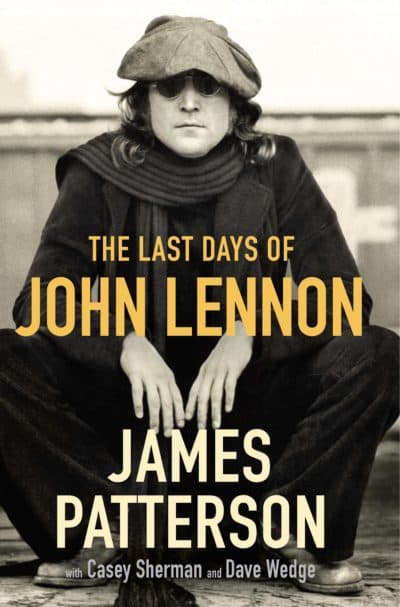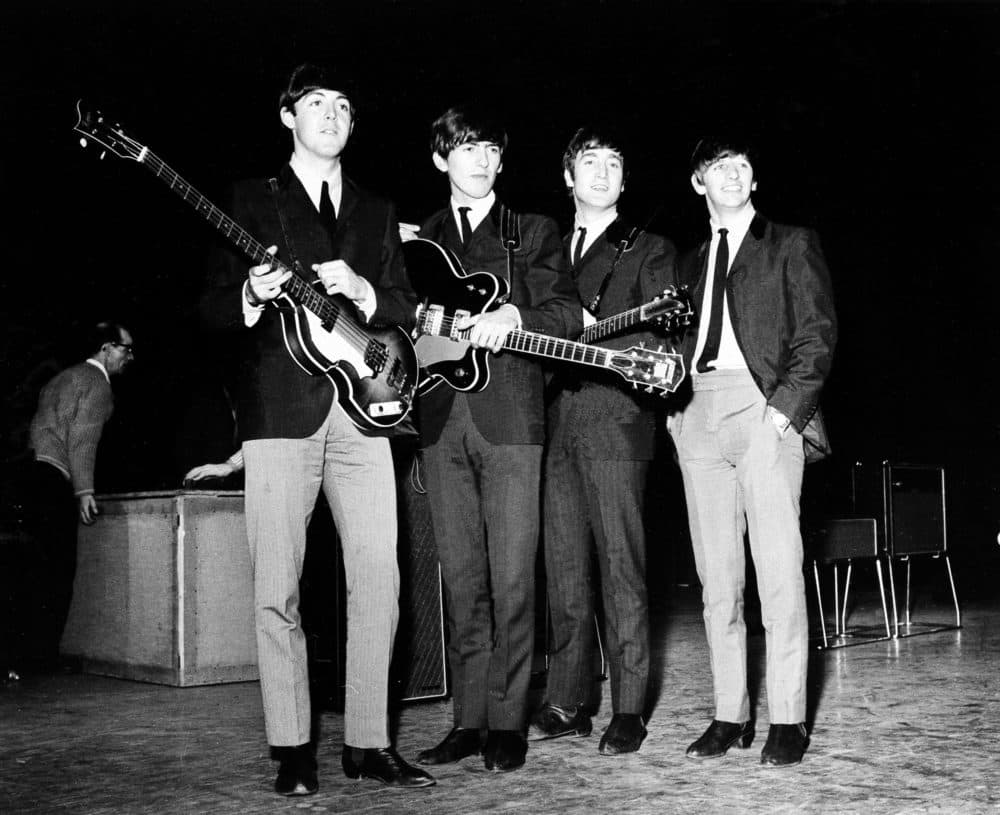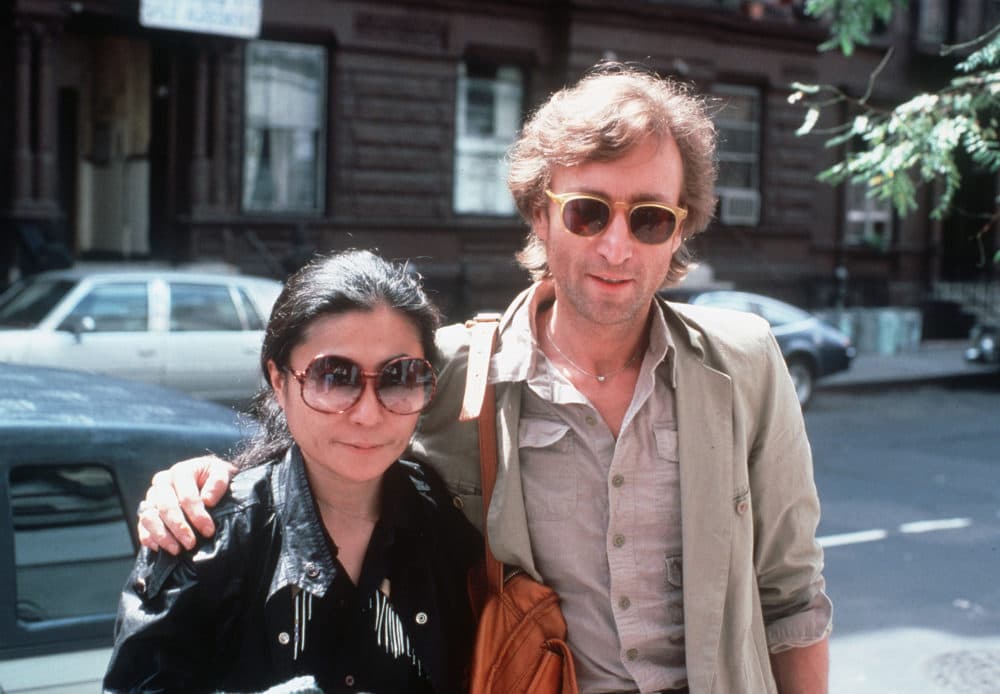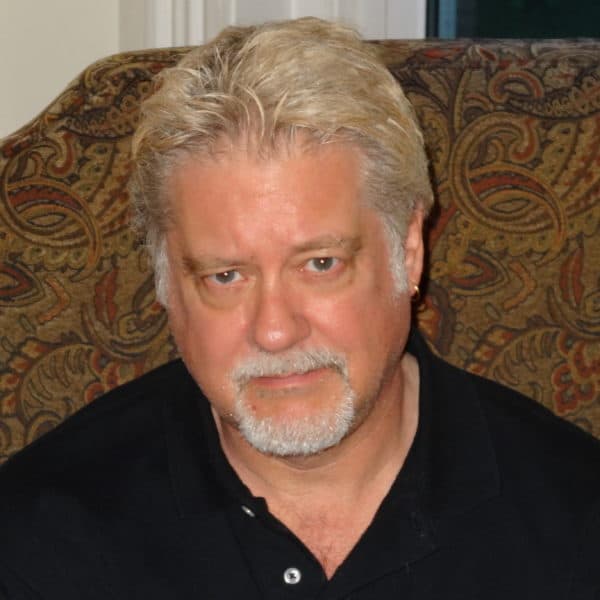Advertisement
Author James Patterson Explores 'The Last Days Of John Lennon' 40 Years After His Assassination
On a mild December night in 1980, four gunshots rang outside The Dakota, an apartment building in Manhattan. The shock and horror registered immediately, far and wide. It became another JFK assassination moment for the baby boomer generation: Where were you when you heard John Lennon had been shot?
 For other age groups — most everyone in Gen X and certainly everyone in subsequent generations — it’s not a jolting, firsthand memory at all, but something read about or seen on TV, recalled, perhaps, as vague, ancient history.
For other age groups — most everyone in Gen X and certainly everyone in subsequent generations — it’s not a jolting, firsthand memory at all, but something read about or seen on TV, recalled, perhaps, as vague, ancient history.This latter group was on the mind of bestselling novelist James Patterson when he decided to collaborate on “The Last Days of John Lennon,” publishing Dec. 7, a day before the 40th anniversary of Lennon’s assassination.
There have, of course, been scads of books about The Beatles and about Lennon, his life and death. “Yeah, there have been other Lennon books before, but so what?” says Patterson, on the phone from his Florida office.
He references what happened this spring when he published “The House of Kennedy,” a book about the Kennedy dynasty. He had realized there was a huge market for Kennedy lore because many people hadn’t lived through the ‘60s and didn’t know the narrative history. He’s certain what was true for the Kennedy book will be true with the Lennon book. (Film rights have already been sold. Patterson says, “Hopefully, we can do a good movie, too.”)
“A lot of people really don’t know that much about Lennon,” says Patterson, 73. “There’s been six books — who cares? I don’t care about that. Did anybody read them? And movies, the same thing. For the most part, I think the movies that have been done about Lennon, in particular, are not good.”
Patterson says his goal was “just to make it more of a story, to write something that people could get into the whole thing. The elements were there, but a lot of nonfiction, to me, is a kind of a bore. This just moves. Michael Connelly said about my books that every chapter moves both the plot and the characterization forward. It turns on a movie projector in our heads. So, that’s what I’m always attempting to do.”
Last year, Patterson hooked up with Boston-based true crime writers Casey Sherman and Dave Wedge. The agent for the Boston scribes told them Patterson was interested in partnering — he’d read their 2015 bestselling book about the Marathon bombing, “Boston Strong: A City’s Triumph Over Tragedy,” and was impressed. The duo pitched him three ideas and Patterson picked this one.
Advertisement
“I can’t possibly write all the stories I’m interested in writing and in this one, it was more [of me] rewriting or changing things than writing,” he says.
Patterson — who has published 275 books and sold 425 million copies, according to his publicist — has never been a fan of long sentences or chapters, and that form continues through “Lennon.” The prose comes in bite-sized, digestible chunks.
Of the collaboration, Sherman says, “He’s the most popular and prolific author of the past 30 years. It was an incredible honor. Dave and I are archeologists and love to dig. So much has been written about it. You have to consume it all and vet the material. Jim [Patterson] took our ideas and turned them into what he does best, a gripping narrative. It was a perfect marriage between journalism and storytelling.”
“Jim’s a machine and he tells a lot of great stories,” adds Wedge. “There’s a thirst for this renewed look at Lennon under today’s microscope, today’s perspective. The gun control argument is different today, the mass shootings, a lot of [true crime] podcasts.”

The title is a bit of a feint; the book is not a massive tome about Lennon’s last days. It goes back to his childhood, The Beatles formation, successes, failures, dissolution; Lennon’s solo albums and collaborations with Yoko Ono, as artist, activist and husband.
“Title aside, I would say what it shows is an evolution of one of the greatest songwriters and musicians of the 20th century,” says Sherman. “John’s journey is really unique — from Beatle to cultural leader to political activist, putting himself out there. And that contributed to his demise.”
“It’s about character development,” says Wedge. “Why do readers want to follow this journey? Why is it relevant?” He says it was what he and Sherman did when they wrote “Hunting Whitey: The Inside Story of the Capture & Killing of America’s Most Wanted Crime Boss,” published this past spring, tracing Whitey Bulger’s criminal roots to the beginning.
The reader meets Lennon’s killer, Mark David Chapman, in the prologue and he resurfaces again about halfway through the book, where his story — a lot of imagined internal dialogue — is juxtaposed with the singer’s. Patterson says his idea for that dramatic juxtaposition was inspired by the 2018 FX series “The Assassination of Gianni Versace: American Crime Story,” the way the stories of Versace and his killer, Andrew Cunanan, were intercut. And the viewer, or reader in this case, knows the ending from the onset. The tension is in how their paths cross — insights into how Lennon was staging his comeback with the just-released collaborative album with his wife, “Double Fantasy,” and how the killer’s mind works.
“We’re both Beatles nuts,” says Wedge. “But Casey and I love writing true crime and we took this as true crime, not a rock book, and gave it a fresh set of eyes.” They talked to witnesses, prosecutors and attorneys. Sherman was ecstatic that Paul McCartney responded to his emails and chipped in thoughts.
In digging into Chapman’s past, the authors discovered Chapman’s desire to kill someone famous was deep-seated. He was a huge Lennon fan but grew outraged when Lennon said The Beatles were more popular than Jesus and again, later in life, when an Esquire story showed how much land the Lennons had acquired. To Chapman, it contradicted the utopian thrust of “Imagine,” and he sang a version that went, “Imagine there’s no John Lennon, it’s easy if you try.”
“He was this nobody looking to become somebody by killing someone famous,” says Wedge, “and ultimately he settled on John Lennon for many reasons, but it easily could have been someone else — Todd Rundgren, Gerald Ford or Jimmy Carter.”
“He had growing hatred toward John and this weird fascination with him,” adds Sherman. “In order to become his idol, he wanted to kill his idol.”
Patterson says he was drawn to the complexity of the story and was further struck by two coincidences. First, that the Lennons once owned a house connected by a bridge to his property in Florida. (Yoko has since sold it.) And second, he was living a few blocks away from The Dakota when the shooting occurred and joined the tearful mourners at Central Park West.

“It’s an unusual grouping of things,” Patterson says of the story itself. “It is a murder story, the back and forth between Lennon and Chapman, which I think is particularly dramatic because I think at that point in his life, John Lennon was beginning to find himself again as an artist and get the confidence he needed. An hour before he was shot, he was just recording or helping Yoko for ‘Walking on Thin Ice.’
“Then, there’s the biopic part of it — The Beatles — I added a lot on The Beatles. And the other interesting piece is the love story. The more I talked to people, the more I felt that it was a genuine love story [between John and Yoko]. At the time, a lot of people peed all over it but I think people can accept it better than they could back then.”
The authors take a deep dive into Chapman’s mindset. How accurate are the accounts of his interactions with others or his presumed internal dialogue?
“I took a little license,” says Patterson. “I learned that from Norman Mailer. If it’s good enough for Norman, it’s good enough for me. They’re minor liberties based on interviews [others did] with Chapman and things that he said. Certainly, it’s directionally right, I think. I’m not a purist, but I wanna be as accurate as I can be.”
Sherman adds, “It was Jim’s creation based on the psych reports. Dave and I uncovered things. We were the only journalists to get access to his criminal case file in 30 years — his interviews at Bellevue his parole review hearings, his interviews.”
Some modern writers have taken a stance against writing about infamous killers, even to the point of not naming them in order to not give them more twisted glory.
“I understand that,” says Wedge. “But people like to read and consume stories about things they don’t understand. Our job is to tell the truth and sometimes it’s ugly. I don’t think it’s glorifying; I think it’s more like we’re sociologists, trying to get in the person’s head. A lot of these [killers] are complex people. They lead double lives.”
He says Chapman — still in prison, denied parole once again in April — appeared normal to his friends, acquaintances and his wife, Gloria. (They are still married.) “But he committed one of the worst crimes in American history in my opinion,” Wedge says. “He killed a human being for no reason but his own ego and put an exclamation mark on the end of the peace movement. That’s about as dark a thing as you can do.”
“The Last Days of John Lennon” will be released Dec. 7.



